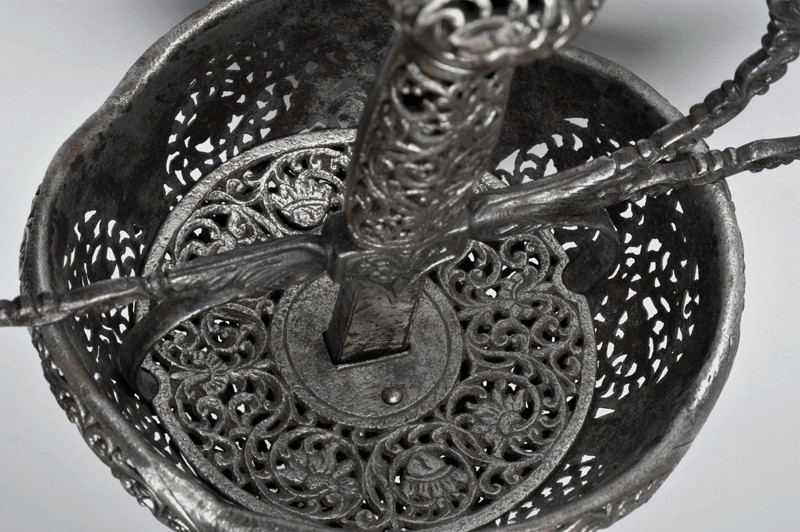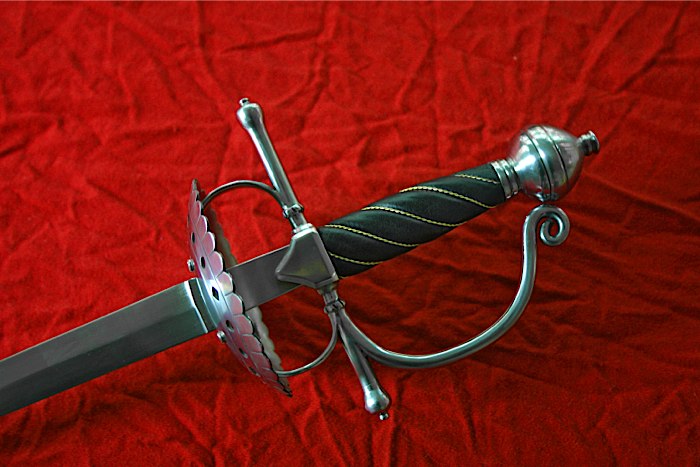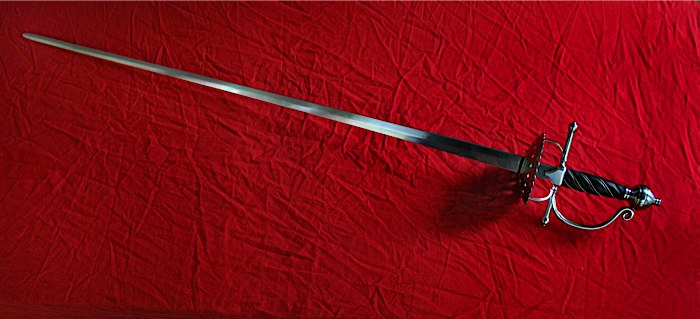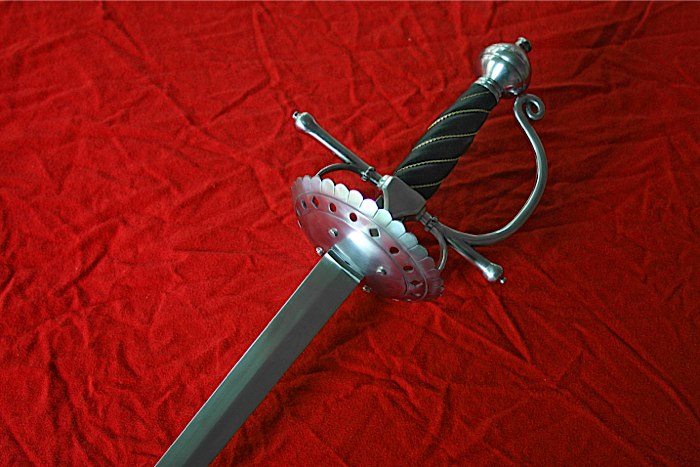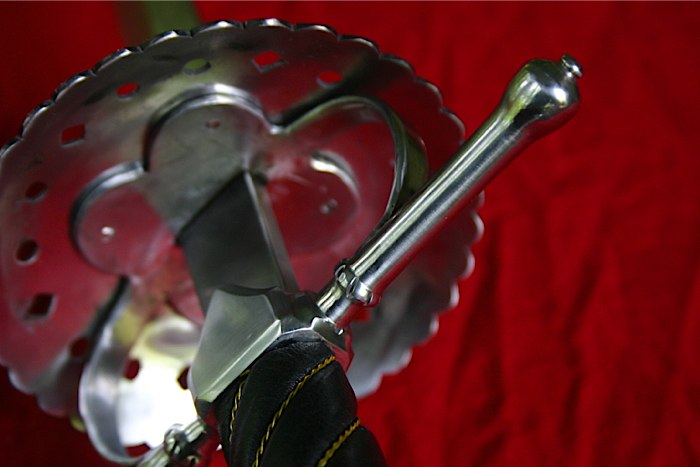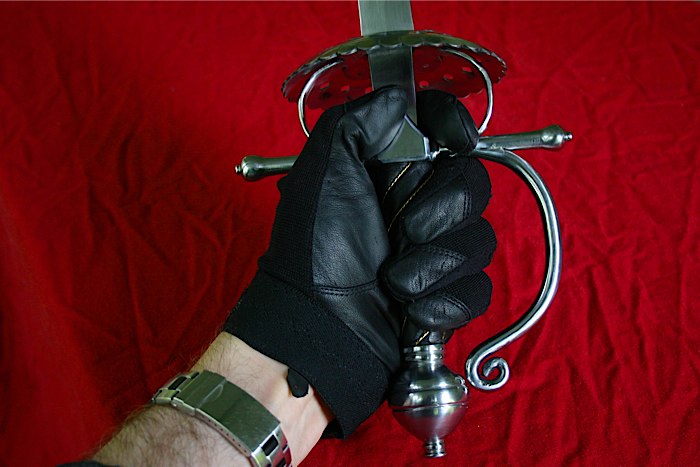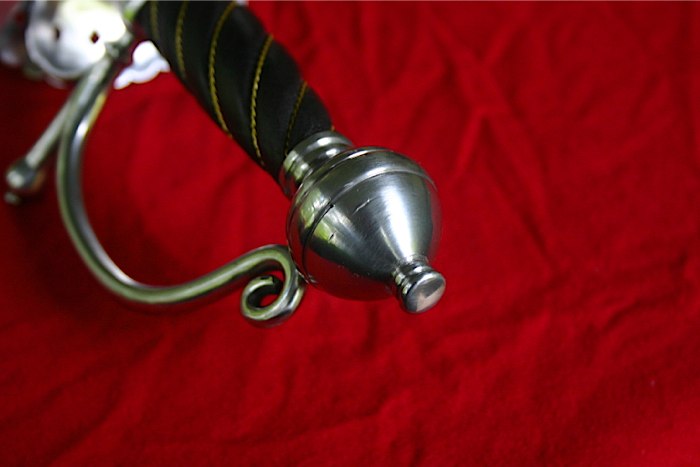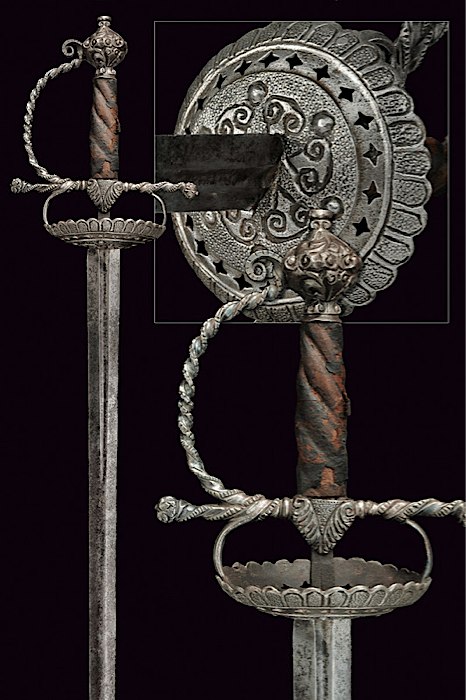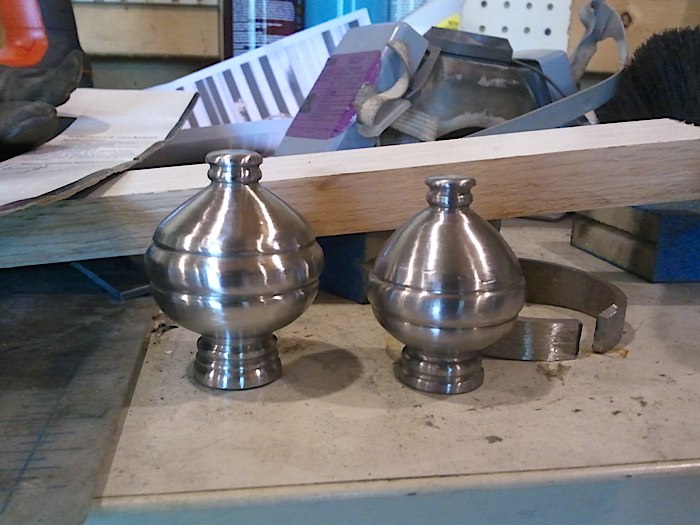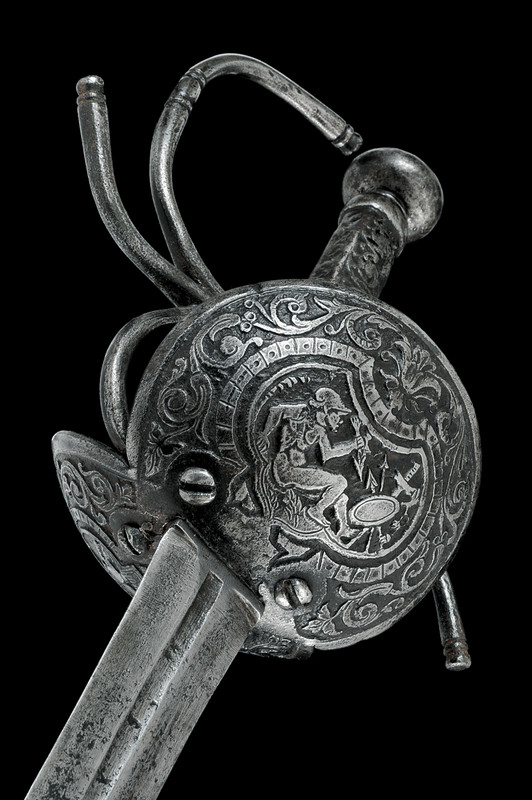Posts: 180 Location: Washington, DC
Fri 10 May, 2013 1:44 pm
Thanks very much Nathan, I appreciate it. I put a lot of time into this one, so i'm glad it shows.
Radovan, I saw your post earlier...those rapiers you made looked really good. Your file work details seemed really spot on stylistically, and the proportions look good too. And the plate on your dish hilt was outstanding!
Your question about the dish-plate screws is and interesting one. Looking at photos of the original, you can see there are clearly 6 slightly domed spots on the dish. I believe these are rivets, and I don't believe the plate itself is made in sandwiched layers to create the various concentric circles you see. You can also see two tiny rivets right at the edge of the dish that secure the rim of the plate to the arms of the hilt.
As I mentioned before, I don't think this is an original blade, so its hard to tell what it's supposed to look like as it passes thru the plate. Are the shoulders of the blade supposed to sit on the top of the arms, like they sometimes do with earlier rapiers, or pass cleanly thru a plate suspended on the arms? Its a mystery.
However, I have seen some later bilbo style rapiers with a continuous plate....see the pictures below. If it were secured at the ends of the arms, the big rivets are in the wrong place. if it's secured at the ends of the arms on a little bi-lobate area (see other pictures), there are still too many rivets.
So, either there is a circular plate beneath the dish that secures to those 6 rives, or the 6 rivets are decorative/meant for some other purpose. In any case, I can tell you that the sort of cloverleaf setup I used is extremely stable. I feel like the dish hilt is really well supported, and could take substantial abuse. Since the plate is supported so far from the center and at 4 different points, there's not so much torque on the screws. The cloverleaf shape cuts down a tiny bit on mass (as compared to a circular format).
I think for later, lighter blades the 2 screw solution is fine, and clearly it was used on bilbo style swords which often had very beefy military style blades, so it must have been a good solution. I make swords for reenactment and stage combat, and so I'm always thinking about actors dropping them 4 feet onto a hard wood stage 6 nights a week and erring on the side of extra durability :)
 Attachment: 95.77 KB
Attachment: 95.77 KB
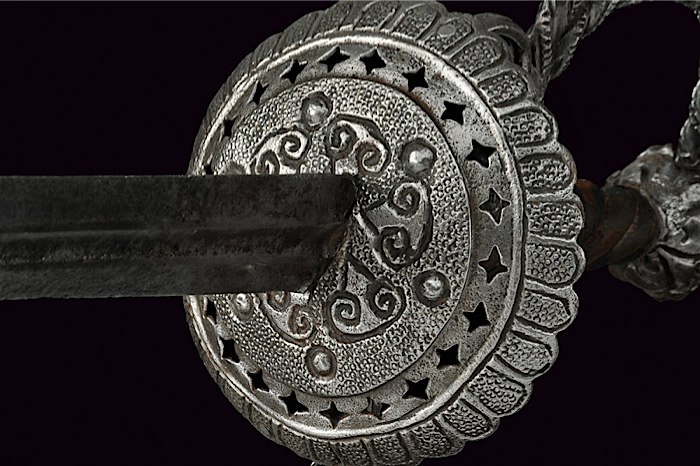
 Attachment: 100.86 KB
Attachment: 100.86 KB

 Attachment: 62.39 KB
Attachment: 62.39 KB
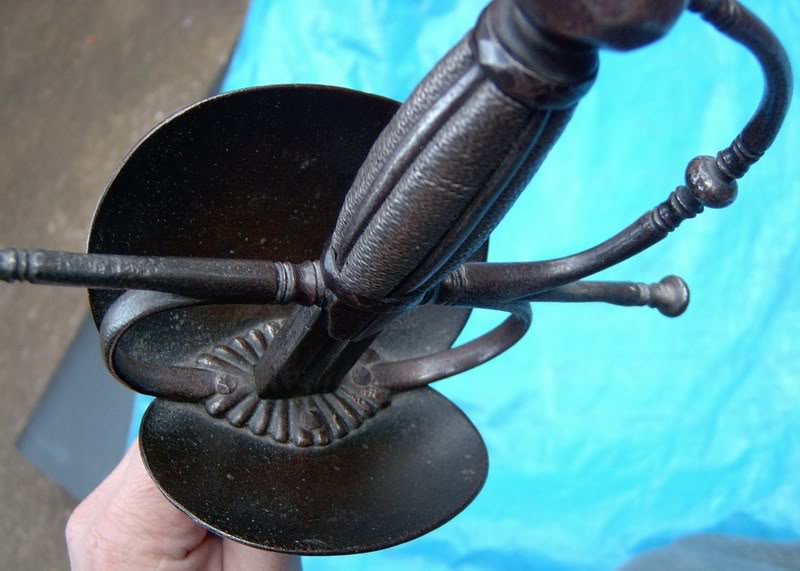
 Attachment: 56.1 KB
Attachment: 56.1 KB
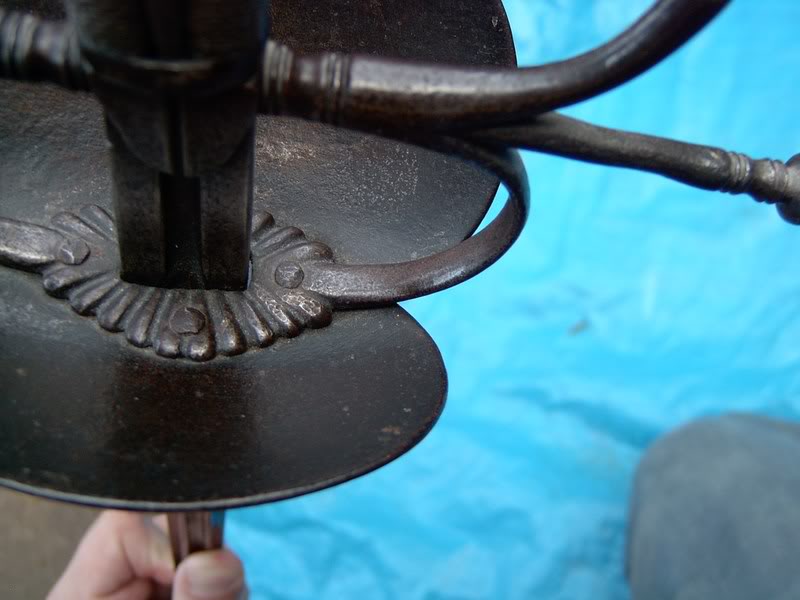
 Attachment: 44.98 KB
Attachment: 44.98 KB

 Attachment: 137.42 KB
Attachment: 137.42 KB
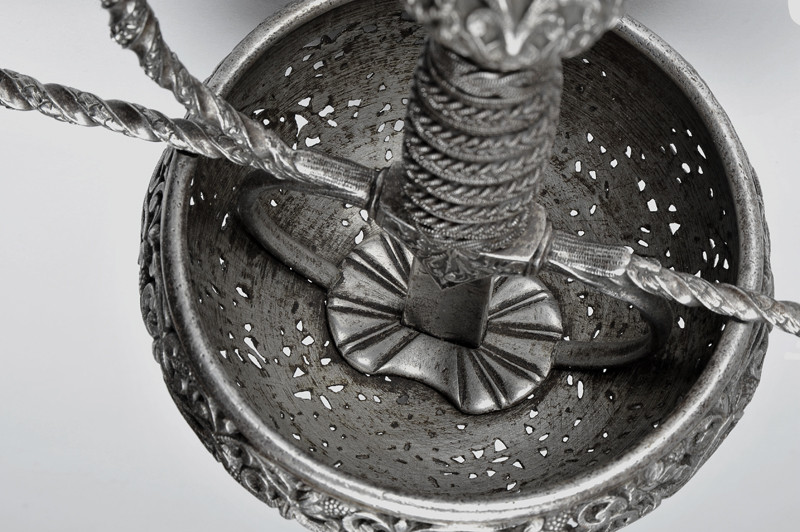
 Attachment: 147.22 KB
Attachment: 147.22 KB
